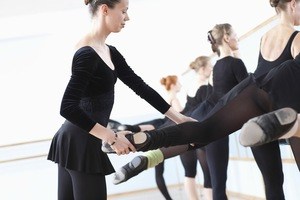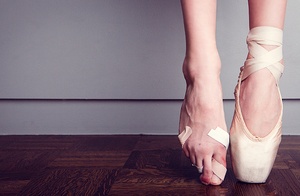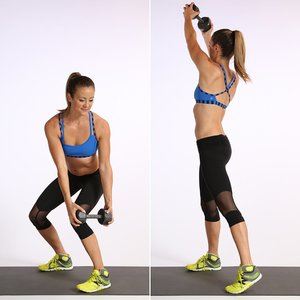5 Strengthening Exercises for Dancers
Overuse injuries are commonly found in dancers due to their intense training regimes. Nearly 60 to 90% of dancers experience an injury or multiple injuries during their careers (Steinberg, Siev-Ner, Peleg, et al., 2013). These injuries include chrondromalacia patella (“runner’s knee”), Achilles tendinopathy, and metatarsal (foot) fractures. Some major causes of injury may be due to anatomic structure, genetics, training regime, improper technique, floor surfaces, age, body mass index, muscle imbalance, nutrition, and menstrual function (Steinberg et al., 2013).
Dance typically includes being on the toes and forefoot in a extreme plantar flexion position, known as “en pointe.” Individuals with poor balance and landing techniques will experience higher ground reaction forces which may subsequently strain the back, knees, and ankles. Incorrect form in many non-professional dancers entail a valgus knee position (knees caved inwards) and hip adduction. Conversely, mature, experienced dancers are able to rely on stronger hip and knee joint muscles to stabilize themselves during landing from jumps. Young dancers also experience lower back pain. Causative factors include high preseason training intensity, history of low back pain, low body weight, scoliosis, and stress fracture in the pars articularis of the spine (Steinberg et al., 2013).
Studies have recommended minimal exposure for young dancers to overload exercises, especially those involving the spine and caution with extensive stretching exercises (Steinberg et al., 2013).
Prevention
Here are a few essential tips to reduce the risk of injury:
- Wear proper footwear and clothing
- Drink fluids regularly
- Do not dance through pain as it will exacerbate the damage
- Practice correct dance technique
- Take adequate breaks during and between dance sessions
- Ensure proper warm-up and cool-down (approximately 5-10 minutes)
- Use preventative taping and/or braces if necessary
Strengthening
| Steinberg, N., Siev-Ner, I., Peleg, S., Dar, G., Masharawi, Y., Zeev, A., & Hershkovitz, I. (2013). Injuries in Female Dancers Aged 8 to 16 Years. Journal of Athletic Training, 48(1), 118–123. http://doi.org/10.4085/1062-6050-48.1.06 |



